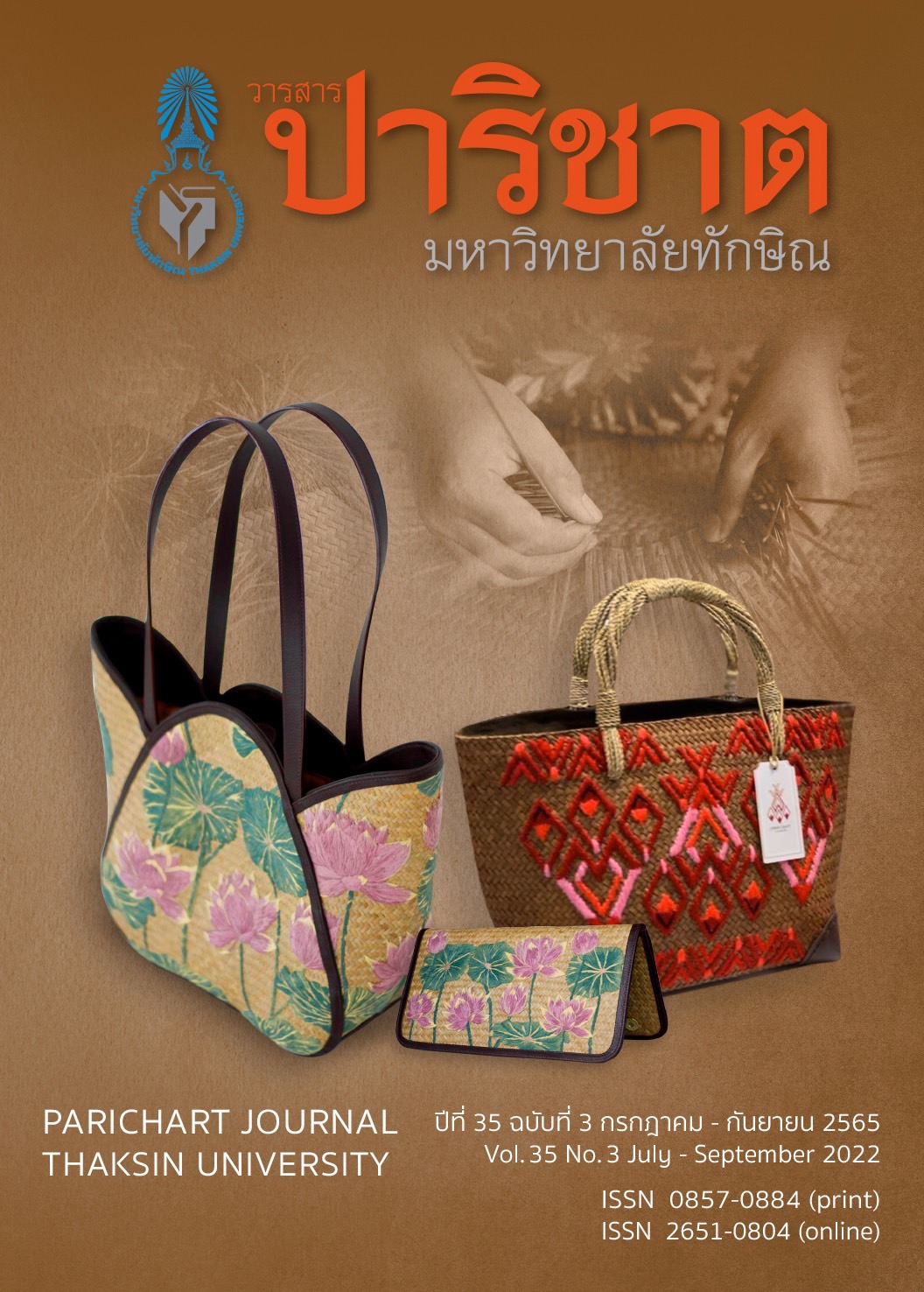Management Model of Treatment Processes and Rehabilitation of Narcotic Addicts in Eastern Economic Corridor (EEC)
Main Article Content
Abstract
The objectives of this research were to 1) study the process of treatment and rehabilitation that affects the cessation of drug addiction, 2) synthesize processes and activities of drug addiction treatment and rehabilitation, and 3) recommend a management model to prevent the relapse of drug addiction among those participating in the treatment program and fix barriers to reintegration into society. The population and the sample group were those who participated in the treatment program for the fiscal year 2017-2019 who were able to stop and relapse, a group of security officers from the Narcotics Control Management Center, and those who align the policy “The addict is a patient” in the area of 3 provinces of the EEC. The research method was mixed research, qualitative research and quantitative research. The results were analyzed using descriptive statistics and inferential statistics, focusing on issues according to research objectives. The results of the research were as follows: 1) the adoption of addicts has restrictions on gender, location, and external factors that affect quitting or reinstating drugs, 2) the process of admission to therapy does not have a variety of practices that lead to learning to avoid heavy penalties, expanding drug networks, and lack of inter-agency integration, and 3) survey and allocations according to the need for assistance, various screening, increase staff and provide ongoing training, and organize a specific location or treatment facility that can be open to patients all the time without having to wait for a budget.
Article Details

This work is licensed under a Creative Commons Attribution-NonCommercial-NoDerivatives 4.0 International License.
References
Office of the Narcotics Control Commission. (2015). Nationwide drug crackdown results. Office of the Narcotics Control Commission.
Office of Strategy. (2015). Strategic plan for prevention and solution to narcotic problems 2015-2016. Office of the Commission for Prevention and Suppression of Narcotics.
Office of the Council of State. (2014). Drug Addiction Rehabilitation Act, B.E. 2545. Office of the Council of State.
National Drug Prevention and Suppression Center. (2015). Handbook of Kwan Land Center for lecturers in Voluntary Behavioral Modification Camp. NACC Office.
Office of Narcotics Prevention and Suppression, Region 2. (2018). Overall statistical statistical situation of the Eastern region. Before and after the entry of the NCPO government, Chonburi: Office of Narcotics Prevention and Suppression Region 2.
National Drug Prevention and Suppression Center. (2015). Drug prevention and solution action plan 2016. Office of the Prime Minister.
Office of the Anti-Petid Drugs Committee, Ministry of Justice. (2017). Drug prevention and solution action plan 2017. Office of the Anti-Drug Commission.
National Drug Prevention and Suppression Center. (2015). Handbook of Kwan Land Center for Lecturers in Voluntary Behavioral Modification Camp. NACC Office.
Coordinating follow-up to assist those who have undergone therapy. (2018). Guidelines for follow-up to help those who have undergone rehabilitation therapy. Drug Prevention and Solution Development Office, NACC Office.
Narcotics Treatment Coordination Division, Office of the NACC, National Narcotics Control Center. (July 21, 2014). Procedures for screening assessment and referral for rehabilitation therapy. In the operation manual for solving drug addict problems according to the National Council for Peace and Order Announcement No. 108/2557 (page 5). Thanapress Company Limited.
Wanichbancha, School of Medicine (2016). Advanced statistical analysis with SPSS. In Assoc. Wanich Bancha, Advanced statistical analysis with SPSS. Samlada Ltd., Part.
Chatu-hong, S., & Tan-sri-sa-kul, S. (2018). Factors affecting relapse drug users with competency rehabilitation in treatment compulsory system as a case study of Office of Probation, Roi-ed Province. Journal of Chopayom, 29(1), 199-209.
Che-masae, S., & Mhadmarn, H. (2016). The opinion of community leaders on drug problem solution of government in Mueang district area Narathiwat province. Journal of AL-NUR Graduate School, Fatoni University, 11(20), 99-114.
Suwannanon, A. (2015). The Study of the model on drug abuse treatment. Journal of the Graduate school of Suan Dusit, Suan Dusit Rajabhat University, 11(2), 213-222.
Thatsananchalee, P. (2011). The process of non-becoming amphetamine addict: A case study of rehabilitated person in process of correctional system. Journal of Chonburi Sahasat Sripatum, 1(3), 36-48.


